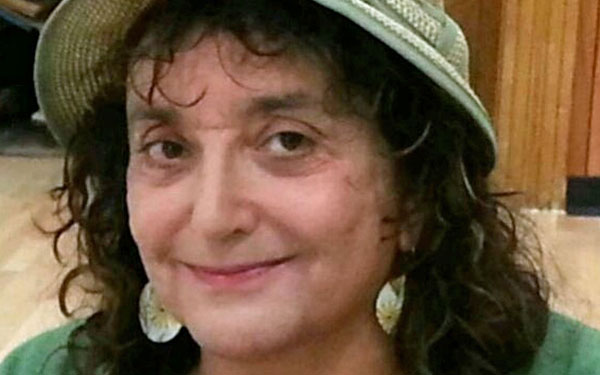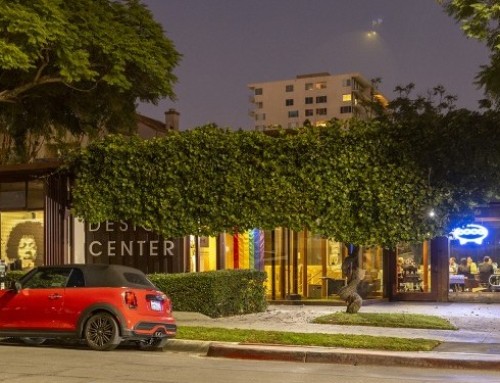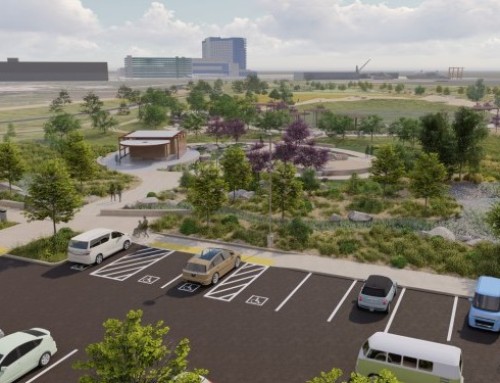This article was originally published in SD Metro and North Park News, August 2003. By Delle Willett.
When I was growing up in the 60s it seemed like my choice of professions was limited to being a teacher, a secretary or a nurse. Being under 5’2”, flight attendant was not an option.
I don’t know why I never heard about the profession of landscape architecture; after all, the term “landscape architect” became common after 1863 when Frederick Law Olmsted and Calvert Vaux designed New York’s Central Park. Yet, even today, the profession continues to be elusive to much of the general public.
According to Thaisa Way, author of “Unbounded Practice: Women and Landscape Architecture in the Early Twentieth Century,” women have practiced as landscape architects for over a century, since the founding of the profession in the U.S. in the 1890s. They practiced as gardeners, garden designers, horticulturalists, and fine artists.
These women, then and now, will tell you they are some of the luckiest professionals in the world because they get to work with nature every day, making the world even more beautiful.
They love what they do and the fact that they can make the world a better place, not just for people, but for every living thing.
They’ll also tell you they are on a mission to lead, educate, and participate in the careful stewardship, wise planning, and artful design of our cultural and natural environments. (A perfect fit for 60’s greenie me!)
An elevator speech for landscape architects might be: Architects design buildings; landscape architects design the environment for the buildings, from Airports to Zoos.
The professional organization for landscape architects is The American Society of Landscape Architects (ASLA), established in 1899 by 11 founding members, one of whom was a woman, Beatrix Jones Farrand. Nationally there are some 15,000 members of ASLA (5526 being women), with 49 chapters representing all 50 states, U.S. territories, and 62 countries around the world. The ASLA San Diego chapter (ASLA SD) currently has over 200 members, including 46 women, six of whom you will meet here.
With one year left at CalPoly San Luis Obispo (SLO) to earn her degree in architecture, VICKI ESTRADA switched her major to landscape architecture. It happened suddenly after Estrada heard Roberto Burle Marx, a world-famous Brazilian landscape architect, describe a landscape architect as “an artist with the earth as a canvas.”
When she told her parents about the change, in shock, they envisioned their well-educated child hauling a wheelbarrow in the back of a pickup.
“Like my parents, people don’t understand what landscape architects do,” said Estrada. “We aren’t posy planters. To be a landscape architect you have to be part architect, part engineer, part sociologist, part biologist, part botanist and part geologist.
We are unique because we can design, write, think big picture—outside the box, and stick our necks out.”
Estrada switched from architecture to landscape architecture when she realized “What makes a city great is not an Eiffel Tower here or an Empire State Building there, it’s what happens in between.”
People expect parks from landscape architects, but they don’t always expect large-scale projects like the kind Estrada designs, such as the Balboa Park Master Plan (1400 acres), the Otay Ranch New Town Plan (22,000 acres), and the Rancho San Diego Specific Plan (2,500 acres).
“The 100-acre Renaissance La Jolla is one of a few projects where I laid out the entire land plan, including every street, every house, every building and all of the landscape architecture,” said Estrada.
Estrada, 61, started Estrada Land Planning (ELP) 28 years ago when she had two kids, no money, no clients; and grew at one point to having 25 on staff with a second office in Phoenix. She’s at a more comfortable size now with a staff of eight.
Unlike her competitors, her clients are not architects, they are builders and developers who go to her and say, “Vicki, here’s the land, what do we do with it?”
With uncountable awards Estrada says her biggest award is seeing people enjoying the spaces she has created, “…like when I go to Rob Field and see the kids using the skateboard park, that’s an award to me.”
In 2000 the ASLA bestowed their highest honor of “Fellow” on Estrada for her contributions to the profession and to society at large. “To have my peers honor me, that’s an award.” She’s also very proud of receiving the Committee of 100 Gertrude Gilbert Award for her contributions to Balboa Park, and the Casa Familiar ABRAZO urbanist award.
While Estrada’s projects are diverse in both scale and scope, she is best known for her work on Balboa Park.
Five years out of college she did the original proposal “all by myself” and has provided landscape architecture and planning services for the park for more than half her life—and is still working on it.
The current Master Plan for Balboa Park, prepared by ELP and approved in 1989, is still the acting Master Plan. She also prepared the Precise Plan for the Central Mesa, creating design concepts for all of the major public spaces within the Central Mesa, including the Plaza de Panama and the Palisades.
ELP also prepared the Master Plan and Precise Plan amendments for the Park Boulevard Promenade, which includes the design for a new pedestrian promenade and plaza linking the Prado to a new San Diego Zoo entrance and exit. “I’ve been working on Balboa Park for so long, it’s in my DNA now.”
Estrada has served on many boards and commissions, including the Commission for Arts and Culture “…which changed the way I looked at the world.”
Nearly a native, Estrada lives in South Park, with her computer-consultant wife of five years, Lynda Arnett.

PATRICIA TRAUTH had never met a landscape architect when she decided to attend graduate school to further her education in environmental design.
“After graduating from Bowling Green State University with a BFA in design and a BS in art education, I knew that I wanted to be involved in site-planning and urban design.” Searching through catalogues she kept reading about programs in “landscape architecture” and thought, “Hmmm, maybe this is what I want to do,” she said.
Graduating from the University of Arizona with a master’s in landscape architecture 26 years ago, Trauth is now a Principal Landscape Architect for URS Corporation, providing landscape architectural services for the southern California region. She joined URS in December 2008, as their first practicing landscape architect in the region.
As the West Leader for the URS internal sustainability program known as the Green Teams, Trauth expanded and standardized the performance-based program to encompass 45 offices throughout the region. She also spearheaded the LEED Silver certification process for the renovated San Diego office and provided an opportunity for junior professionals to acquire experience in the certification process, which is now required to sit for the LEED exam.
“I feel very fortunate to have found my niche in life. This profession has been rewarding and I’ve earned a pretty good living doing it. Along the way many people have helped me professionally and I think this is a good time to start giving back.”
As incoming President of ASLA SD, Trauth says this is where she can have the most impact on the profession. She intends to make the profession of landscape architecture more visible, engage in thought-provoking events, and mentor young professionals. Trauth has a history of involvement in ASLA, including serving two terms as Vice President. So she knows, “This will be a lot of work, but I’m really looking forward to it.”
Trauth’s projects of note:
The San Diego International Airport Expansion: Over the last four years, working with a team consisting of professionals from the Airport Authority, and Kiewit & Sundt (contractors), Trauth has developed sustainable solutions during the design and construction of the airport improvements. These measures will lead to decreased water usage, reduced energy consumption, traffic congestion relief, and a more efficient curb-side check-in system.
The landscape design provides a contemporary look that blends in with the existing environment, includes informal clusters of drought-tolerant trees and shrubs, and utilizes the largest drip installation in San Diego County with weather-based controllers that self-adjust the valve operation and are highly efficient with regard to water-use. Permeable paving and bioswales are installed at key locations to help clean up the storm water before it enters the storm-drain system.
The project is designed to achieve LEED Gold certification from the U.S. Green Building Council.
Bird Rock Coastal Traffic Flow Improvements: This award-winning project turned La Jolla’s Bird Rock into a thriving community. Improvements include roundabouts to encourage safety and pedestrian activity in the Bird Rock neighborhood. Utilizing a seacoast theme and indigenous plant material, the streetscape improvements provide additional outdoor pedestrian space for retail activities.
Coronado Bayfront Civic Center: This 16-acre site has become the social, cultural and recreational hub of the city and includes City Hall, the Community Center, an Olympic pool, a passive park and the bay-front promenade.
The park includes an amphitheater and an extensive plaza to accommodate large groups. The amphitheater combined with a spacious terrace enclosed with seatwalls and a trellis has become a favorite spot for weddings and other celebrations.
Trauth, 57, lives with her husband Greg Rollinson, a general contractor, and their two teenage children in Cardiff-by-the-Sea.
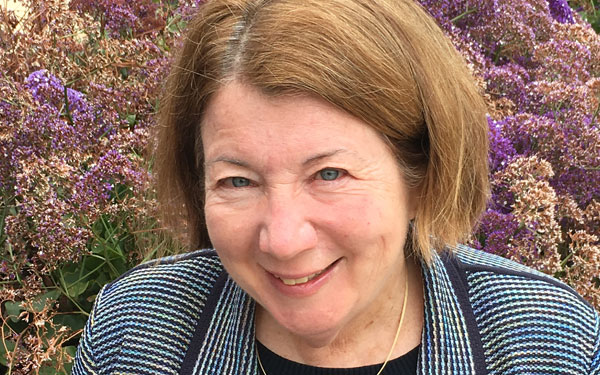
By her senior year at an all-girls’ Catholic high school KATHLEEN GARCIA was sure about two things: she wanted to go to UC Berkeley College of Environmental Design and she wanted to study landscape architecture. But the protective nuns wouldn’t send her transcripts to Berkeley, thinking “this naive little girl would be chewed up on that big1970’s Berkeley campus,” Garcia explains.
So she went to San Francisco State for her first year of college and then transferred. After graduating from Berkeley she went to Harvard University’s Graduate School of Design for her masters in landscape architecture.
“When I got into my landscape architecture courses I realized that it was far more interesting and far better choice for me than any other. It was really where my passions lie,” she said.
Garcia, 57, was in traditional practice for 25 years as a Principal in the nationally recognized firm Wallace Roberts & Todd LLC (WRT), where she was the director of the San Diego office.
Her early work in San Diego in the mid-1980s initiated the planning for the Otay Ranch when it was in private ownership. She has also done park planning for the East Mesa of Balboa Park and Mission Bay Park as well as many park-system master plans and designs including Santee and the Baldwin Hills Overlook, and multiple projects on university campuses.
A highlight of her career is a 10-year project with the City of Santa Monica which resulted in the designs of the award-winning Palisades Park and South Beach. Her career has also included the new SD County Operations Center and the planning and landscape conceptual design for Civita in Mission Valley (formerly Quarry Falls) and Millenia in Chula Vista.
Since 2010, Garcia has been the Planning and Community Development Director for the City of Del Mar where she oversees current and advanced planning, code enforcement, the building department and the Clean Water program.
In the planning department they do visionary work—long-range planning—and regulatory, which is following the codes and projects review, and then they also have the enforcement when people don’t follow the rules.
“This has been a new challenge. I worked 25 years at WRT and loved it, but I also realized that if I was going to stay fresh and continue to learn, one of the best ways was bringing my skills to a related but still challenging position. I took the plunge; it was a way of really expanding my reach.”
An ASLA “Fellow” and a LEED-accredited professional, Garcia’s long-standing and demonstrated commitment to improving the public realm through volunteer efforts with civic, professional and advocacy organizations has inspired the respect of political leaders and given rise to a number of prominent appointments never before extended to landscape architects in the region. Highlights include four mayoral appointments in the City of San Diego (three appointments setting a precedent as the first landscape architect to hold the position).
She completed eight years of a mayoral appointment as Vice Chairperson of the SD Planning Commission, the first landscape architect to have served in that capacity. In addition to this citywide appointment, Garcia has also served on the Board of Directors for the Southeastern Economic Development Corporation and chaired the Citizen’s Subcommittee on Urban Form & Environment for the City of San Diego’s Strategic Framework 2020 Plan, which gave rise to San Diego’s City of Villages.
Throughout her involvement in these activities, Garcia has been a strong advocate for the responsible stewardship of the landscape, demonstrating leadership capabilities that position landscape architects to have a greater impact on the environment.
Garcia is married to David Rapaport, a professor at UCSD’s School of Medicine. They live in a 101-year-old home in San Diego’s historic Burlingame district.
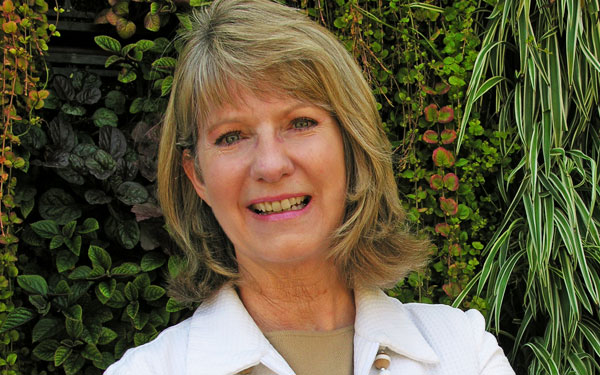
As the daughter of a civil engineer, MARIAN MARUM grew up with a keen understanding of the land, spending a great deal of time in the field with her father. She was motivated by her three brothers to “keep up with the boys” and entered the University of Arizona in the architecture program. She soon learned about the landscape architecture program and switched majors.
Landscape architecture seemed like the perfect fit, with her sense of the land from her father, and encouragement from her mother that she could do anything her brothers could do.
Graduating with honors and a bachelor’s in landscape architecture, Marum moved to San Diego in 1979. Powered by the message that she could do anything that the boys could do, she started her own firm in 1984 during a tough recession and grew it into a thriving business with a reputation for exceptional client service, creative problem solving, commitment to stewardship, and effective communication skills. Numerous awards are testimony to her firm’s commitment to quality and design excellence.
With the goal of “enhancing livability through rich connections to nature,” Marum has consistently delivered projects that give back to the natural environment and enhance the human experience.
With her background in engineering, architecture and landscape architecture, Marum sees herself as a “connector” with a holistic point of view that helps integrate diverse concepts into effective design solutions.
“As landscape architects, we work closely with other architecture and engineering disciplines. We’re trained to have a holistic view of the natural world and the built environment. Our skills and expertise put us in the unique position of bringing people and ideas together, and being a voice for nature.”
The San Diego Community College District recently honored Marum with the Award of Excellence for Exemplary Service as a Woman-owned Business. The District’s project manager nominated Marum for the award, referring to her as “the glue on the team, finding creative solutions to difficult situations that kept the project moving forward.”
Marum’s commitment to the environment led her to join the U.S. Green Building Council in 2007 and earn her LEED credential shortly thereafter. Numerous projects in the Marum Partnership portfolio incorporate sustainable-site design strategies that focus on water conservation, heat mitigation, as well as enhancement of soil, water quality and habitat resources.
Higher-education projects for the San Diego and Palomar Community College Districts have achieved LEED Gold status, focused on conserving water as prices rise higher each year.
LEED Gold was achieved at MCAS Miramar Golf Course Clubhouse, with other projects at Naval Station North Island, 32nd Street and San Clemente Island. Her rehabilitation courtyard at Balboa Naval Hospital’s Comprehensive Combat & Complex Casualty Care Facility serves as an empowering outdoor environment for soldiers working on their physical skill and mental confidence.
Marian was appointed by Governor Wilson to the State Board of Landscape Architects, has served as Chapter President of ASLA SD, President of Partners for Livable Places, and on the County Water Authority’s Conservation Action Committee. She was the founding chair of the ASLA SD Stewardship Committee, the first such committee in the country.
Marum, 56, was born and raised in Tucson, Arizona, and lives in Scripps Ranch with her husband and teenage son.

ROBIN SHIFFLET started at Cal Poly SLO as a bio-science major, but after she nearly blew up the chem lab she realized it wasn’t her calling. Taking an inventory of her interests (history, architecture, art and horticulture), she changed her major to landscape architecture, graduating in 1982 with honors.
Soon thereafter she landed an apprenticeship with landscape architects Wimmer, Yamada & Associates and obtained her landscape architecture California state license in 1987. She formed her own firm in 1992 and then went to work as a landscape planner for the City of San Diego in 1995. She was attracted to working for the city because, “In public practice you make land-use policies for outdoor spaces that are enjoyed by a wide variety of users.”
Today, still with the city, she is a park planner in the Development Services Department, working with two other landscape architects on long-range planning for the city’s community planning areas, forecasting needs for future city parks, preparing public financing plans to fund the parks and providing guidance on land entitlements that include the construction of public parks.
“Working in the public realm requires patience and the understanding that the public policy takes time to develop and implement. It is important to be a good listener and to be able to find a compromise among various stakeholders,” she said.
Shifflet is excited about and most proud of the following recent projects.
San Diego River Park Master Plan: A policy document to guide future development along the 17.5 miles of the San Diego River, the Master Plan vision is to “Reclaim the valley as a common, a synergy of water, wildlife and people.”
Working with ten very diverse advisory bodies, she wrote new code language that would implement the plan over the next 20 years.
One of the most significant aspects of the plan is to create a river pathway connecting Ocean Beach Park to the City of Santee, providing new recreation facilities along it as well as link to other existing recreation facilities.
Shifflet received unanimous approval of the Master Plan from the communities along the river and the City Council adopted the plan in May 2013. She is now working with the State River Conservancy and the local non-profit River Coalition to find funding and implement the plan.
“The river is a beautiful place. Other cities are doing the same: rather than turning their backs to the river, they are facing development towards the river, which provides significant value and advantages for urban environments.”
Otay Valley Regional Park: Located along 13 miles of the Otay River from South San Diego Bay to the Otay Lakes, this park is made up of approximately 8,500 acres of open-space lands. In this joint effort with the County of San Diego and the City of Chula Vista, Shifflet wrote the design standards and guidelines for the park, and then went on to build the first trail segments and ranger station. In 2009, ASLA SD awarded the project the Urban Design Merit Award for the thoughtful planning and sustainability of the trail system.
Active in ASLA, Shifflet served as a National Trustee for ASLA SD, the chapter representative to the California Council of ASLA, and is the 20th past president of the ASLA SD. During her Presidency, Shifflet conceived of the Chapter Community Grant to assist non-profit groups with projects that improve the environment and enhance the community awareness of the profession of landscape architecture.
Shifflet, 54, lives in North Park with her husband and is involved in a number of organizations including the Sierra Club, San Diego River Coalition, and the Audubon Society.
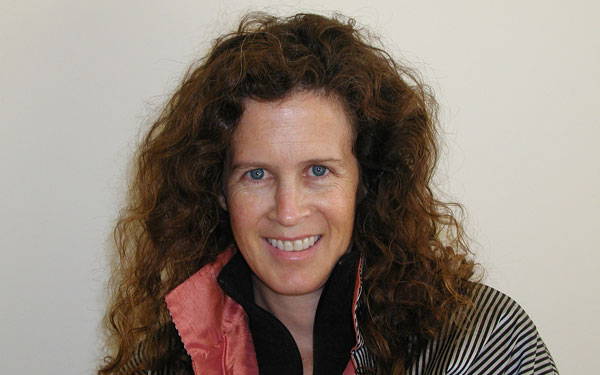
Denver born and raised, while in high school LAURA BURNETT learned about landscape architecture when her father brought a book home on careers. “I liked what I saw and have never looked back,” she said with a satisfied smile.
Landscape architect and urban designer Burnett is known for her skill at integrating sophisticated designs with the functional requirements of her projects.
Her work in the planning and design of urban communities, parks, campuses, transit-oriented facilities, and regional open-space networks results in rich and exciting environments where infrastructure, buildings, and landscape work as a coordinated whole.
“Laura Burnett is a valued team member whose collaborative approach brings a static structure to life through extraordinary landscape architecture,” said Alan J. Petrasek, Senior Vice President, Clark Construction Group.
An undergrad of Colorado State University College of Forestry and Natural Resources with a bachelor’s in landscape architecture and a graduate of Harvard University Graduate School of Design, with a master’s in landscape architecture, Burnett is licensed to practice in four states: California, Colorado, Louisiana and Wyoming.
Her portfolio extends far beyond San Diego: to San Francisco; Los Alamos, New Mexico; New Orleans; Fairbanks, Alaska; to Santiago, Chile.
Active in the community, Burnett has served on numerous boards. A gifted designer and skilled project manager, Burnett brings to her work a strong commitment to the principles of sustainability and the cultural, functional, and aesthetic interface of human activity and natural systems. As such Burnett has won numerous awards from ASLA as well as from the American Planning Association, and the California Preservation Foundation.
In 2011 the ASLA bestowed its highest honor of “Fellow” on Burnett in recognition of her work in the planning and design.
Burnett opened her own firm, Burnett Land & Water, in 2011, built on her 25-year professional career that includes working for Spurlock Poirier Landscape Architects from 1988 to 1991, and as Principal with WRT from 1991 to 2011.
“Our expertise is public open spaces—places where people live, learn, work and recreate,” said Burnett.
These are a few of her projects:
Caltrans District 11 Headquarters, SD: Burnett designed the 11-acre campus landscape to compliment and interpret the site’s significant cultural context. Located between the San Diego River and Old Town—a district listed on the National Register of Historic Places—the design includes pedestrian plazas, children’s play areas and parking lots.
Torrey Pines City Park, General Development Plan: Dedicated in 1889, the 44-acre Torrey Pines City Park was established for public use and enjoyment. But over the years with multiple uses, the park has experienced little protection of the native vegetation and bluffs.
Burnett, as principal of WRT, led a team of scientists, engineers and historians through a public planning and design process that resulted in a plan that balances preservation of cultural resources, rehabilitation of the historic gliderport, improvement of the beach trails and reestablishment of native habitat, with the introduction of public gathering places, accessible facilities, integrated interpretation, security and stormwater management.
Public Open-space Implementation Plan: As a subconsultant to Spurlock Poirier, Burnett was responsible for developing the vision and plan for a sustainable green-space system for downtown San Diego, establishing an integrated network of public open space linking downtown neighborhoods, Balboa Park and the waterfront.
The unifying vision is “cultivating community health—environmental, cultural, economic and individual health.” The Green Rights-of-Way will serve to collect, cleanse, and re-use stormwater, provide four miles of exercise trails, play areas for small children, picnic and multi-use areas, as well as dog parks.
Burnett, 52, works and lives in Little Italy with husband, landscape architect Martin Poirier.
Closing thought: Maybe the reason landscape architecture is such a well-kept secret is that the design of the environs is so perfect and natural that people don’t even realize that someone designed them—they just fit in.


